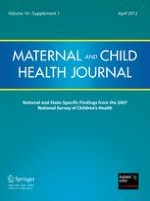01-04-2012
Does a Medical Home Influence the Effect of Low Birthweight on Health Outcomes?
Published in: Maternal and Child Health Journal | Special Issue 1/2012
Login to get accessAbstract
The objective of this study was to investigate the possible modifying effect of medical home on the association between low birthweight and children’s health outcomes. The analytic sample included children 5 years and under from the 2007 National Survey of Children’s Health whose mothers were the primary respondents and who had non-missing covariate information (n = 19,356). Controlling for sociodemographic factors, logistic and ordinal regression models estimated the presence of developmental, mental/behavioral or physical health outcomes, condition severity, and health status by birthweight, medical home, and their interaction. Prevalence estimates of physical, developmental, mental/behavioral and severe conditions among those with any conditions as well as fair/poor overall health were 8.9, 6.8, 2.4, 41.6, and 2.5 %, respectively. Overall, low compared to normal birthweight children had a higher prevalence of physical and developmental conditions and fair/poor health (15.2 vs. 8.3 %, 11.1 vs. 6.4 %, 4.5 vs. 2.3 %, respectively). Medical home did not significantly modify the effect of birthweight on health outcomes; however, prevalence of all outcomes was higher for children without a medical home. Adjusted models indicated that low birthweight children were almost twice as likely as normal birthweight children to have a physical or developmental condition and poorer overall health, regardless of having a medical home. Having a medical home was associated with equally improved health outcomes among normal and low birthweight children. Adequacy and frequency of medical home care should be investigated further, especially among low birthweight children.





